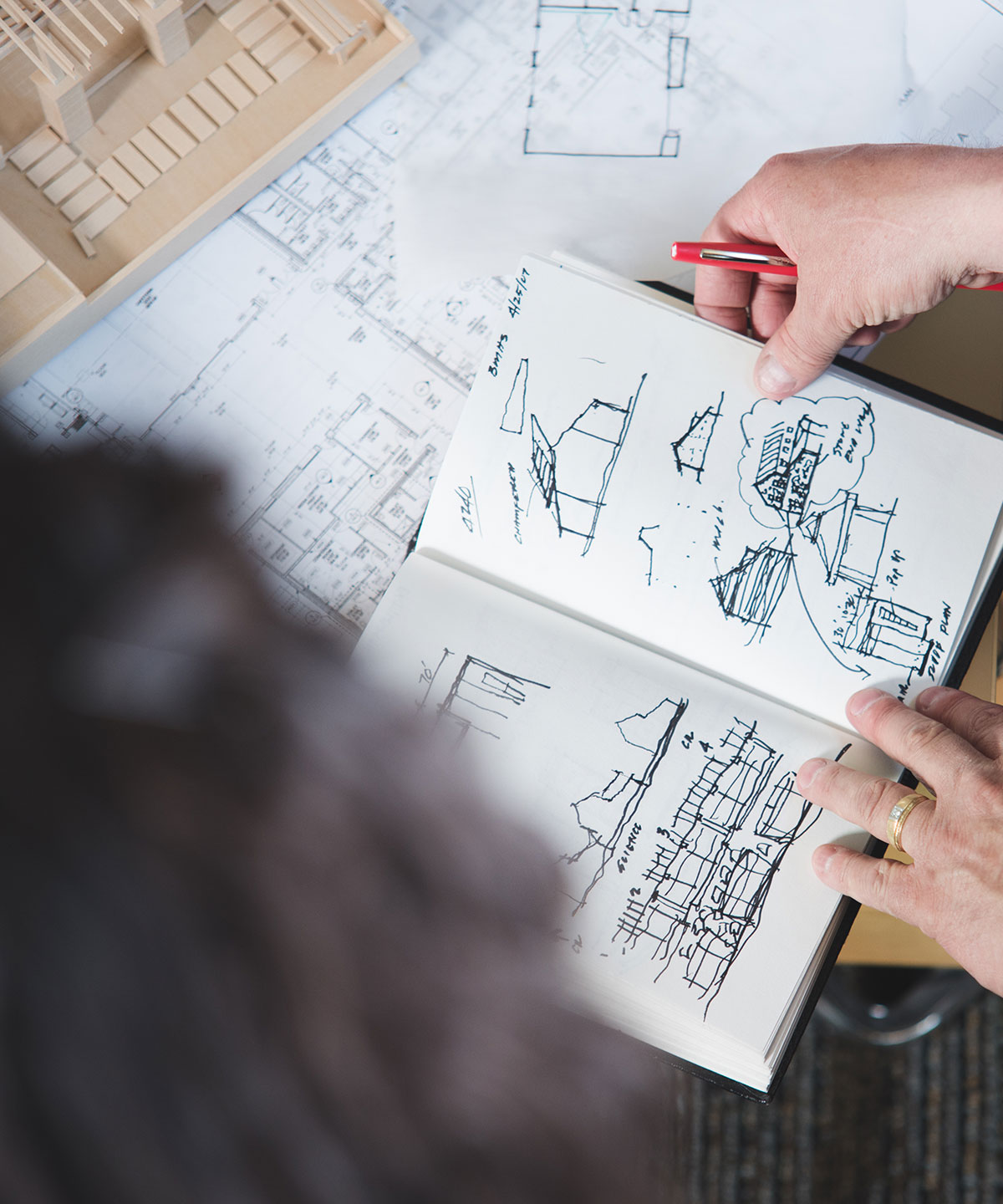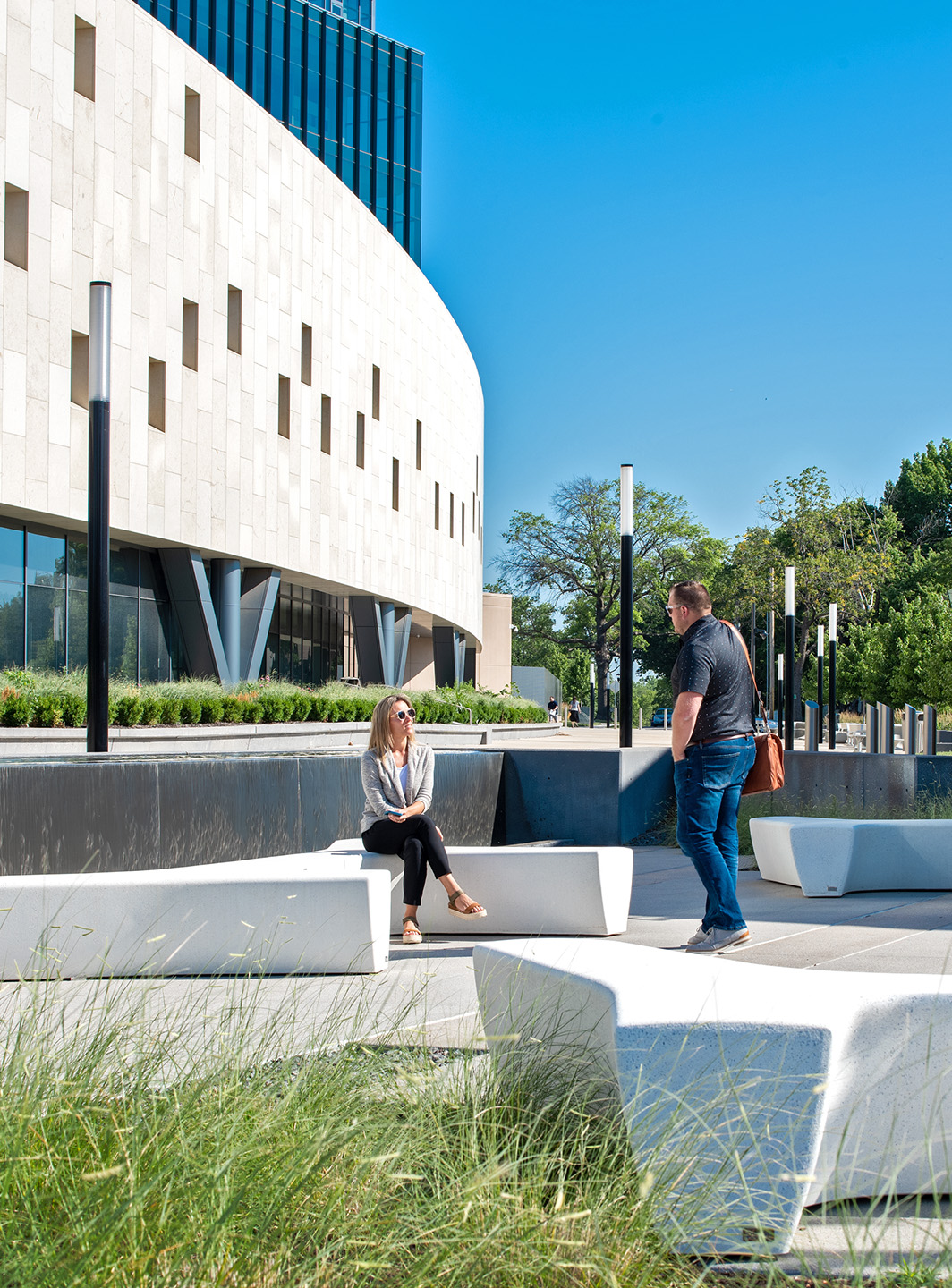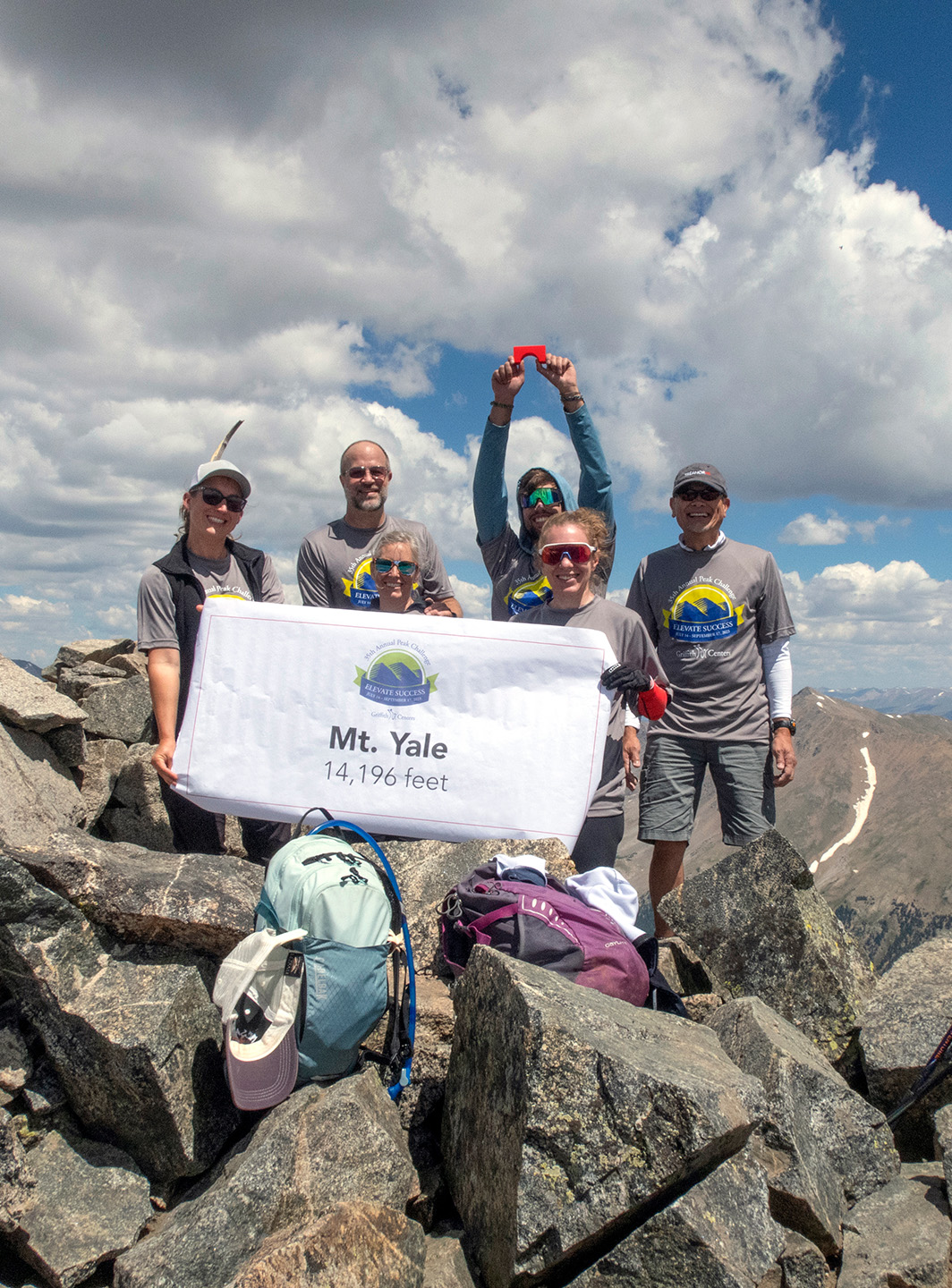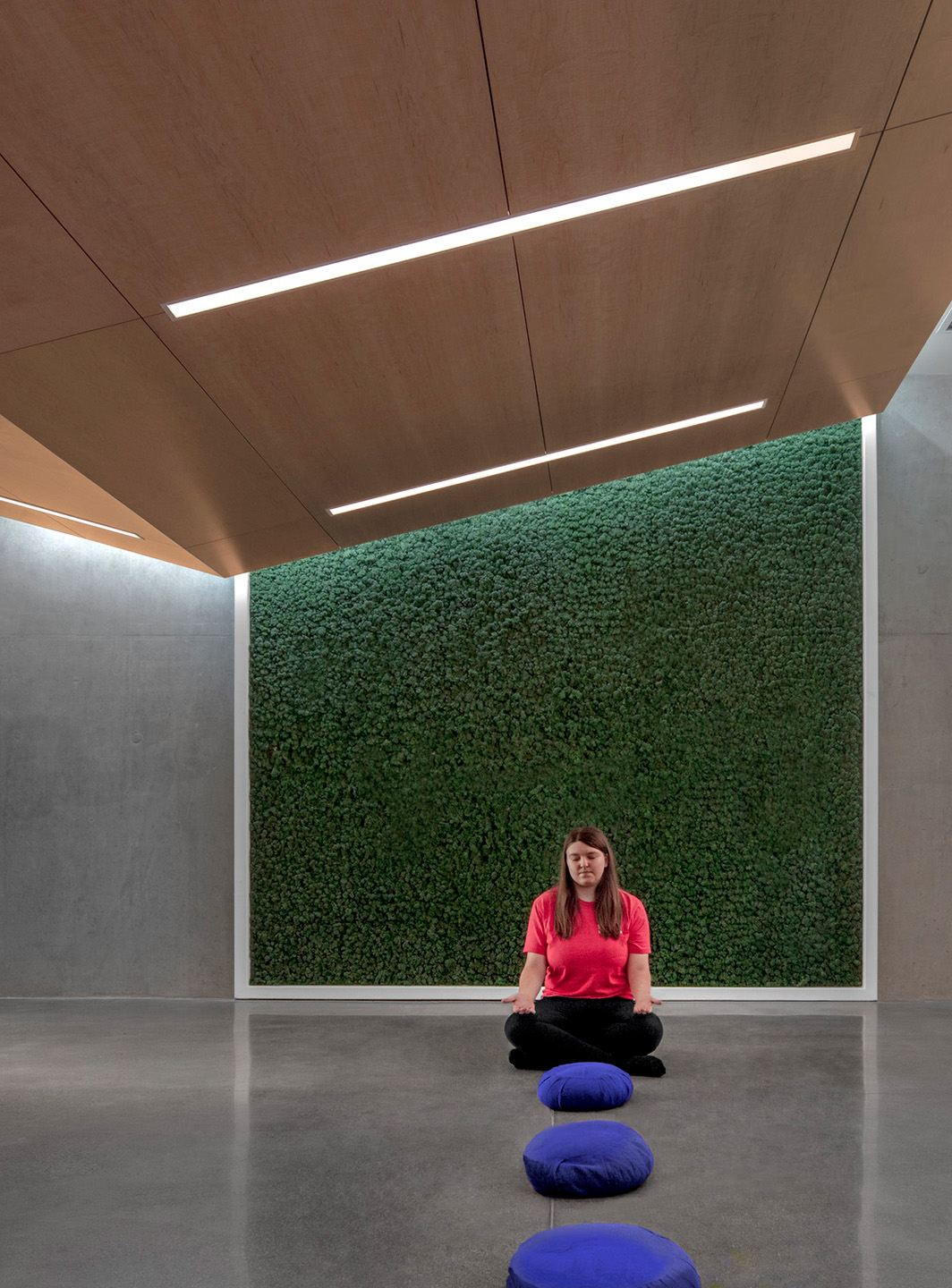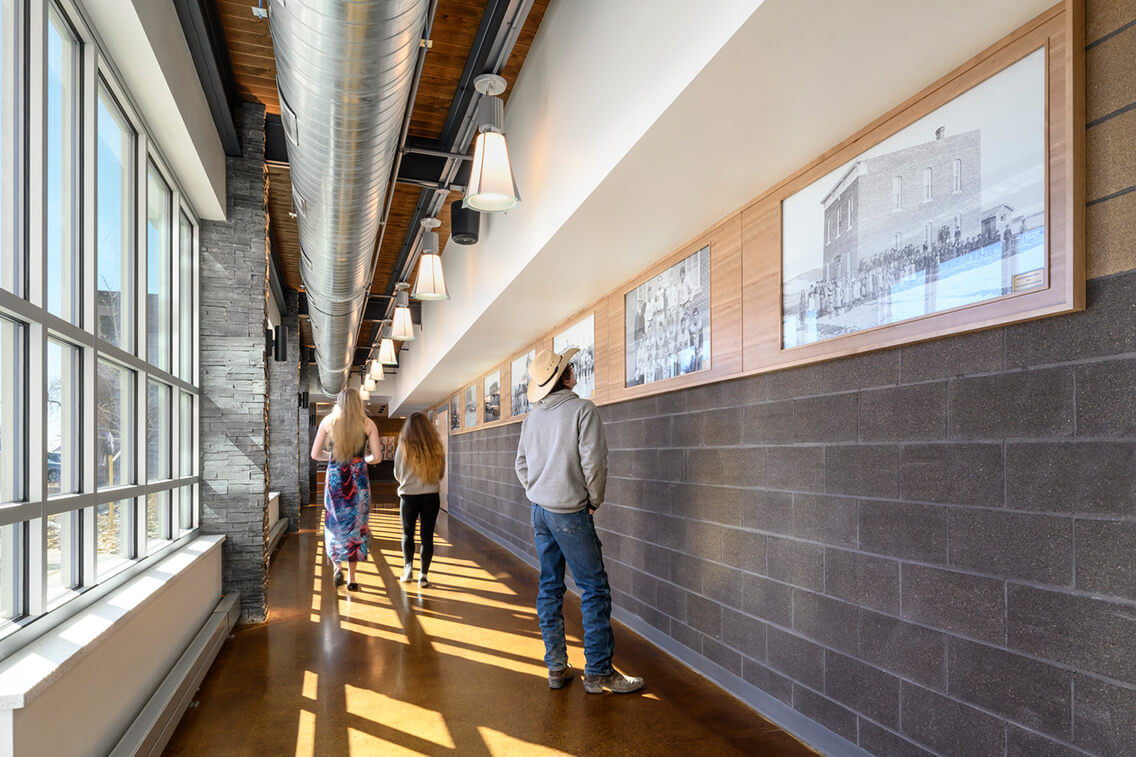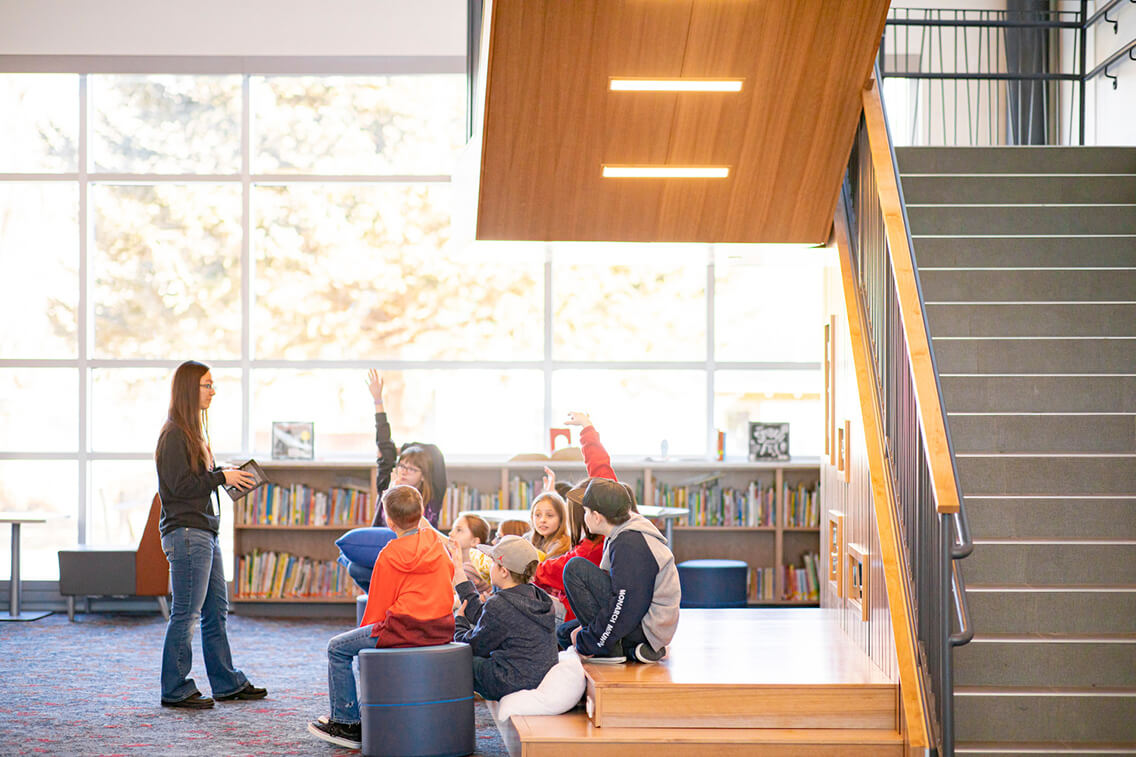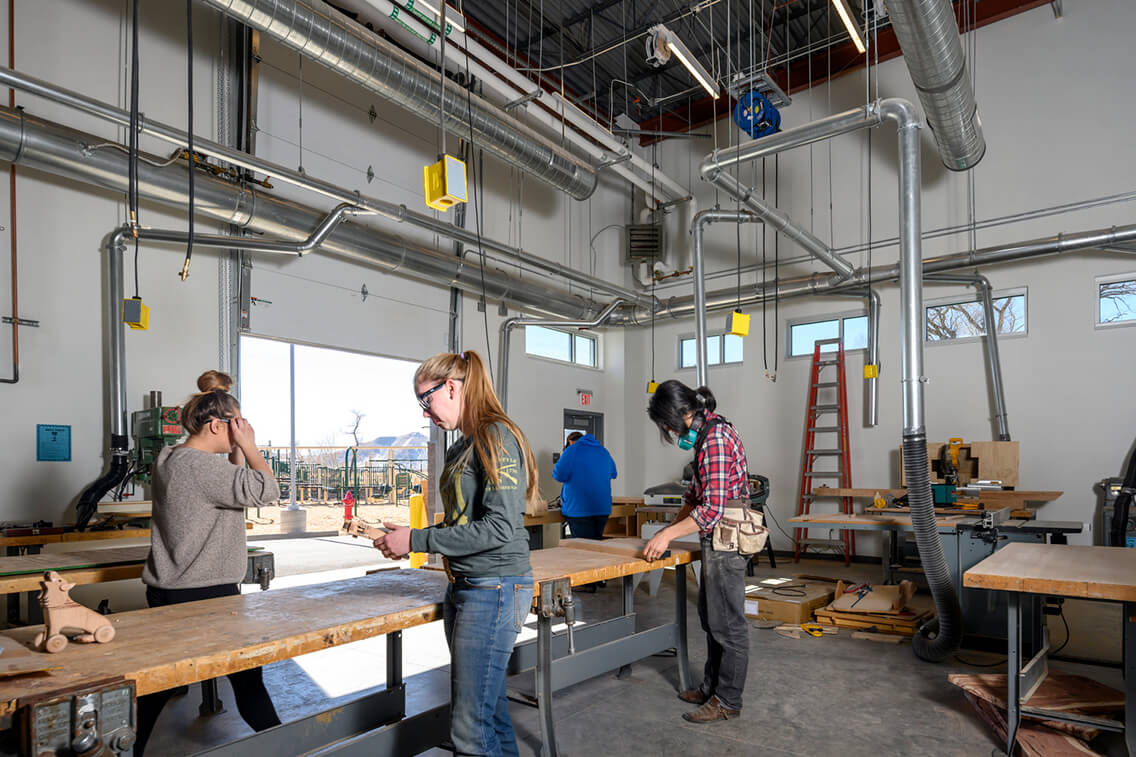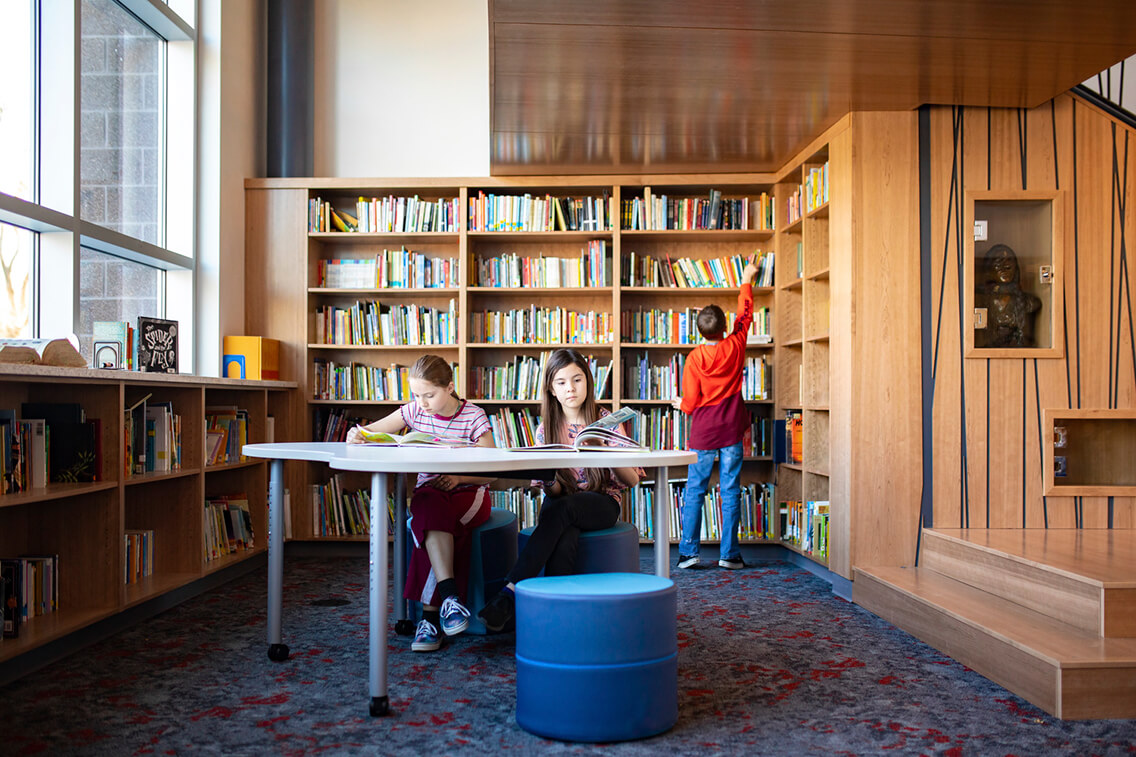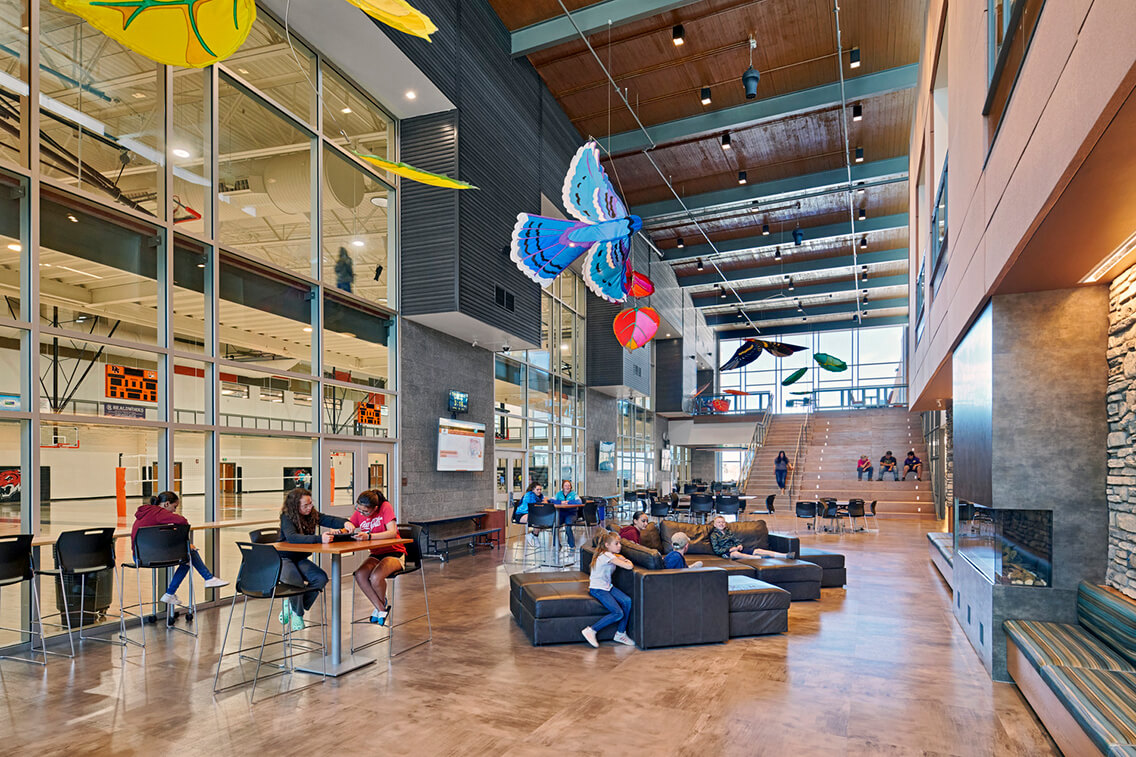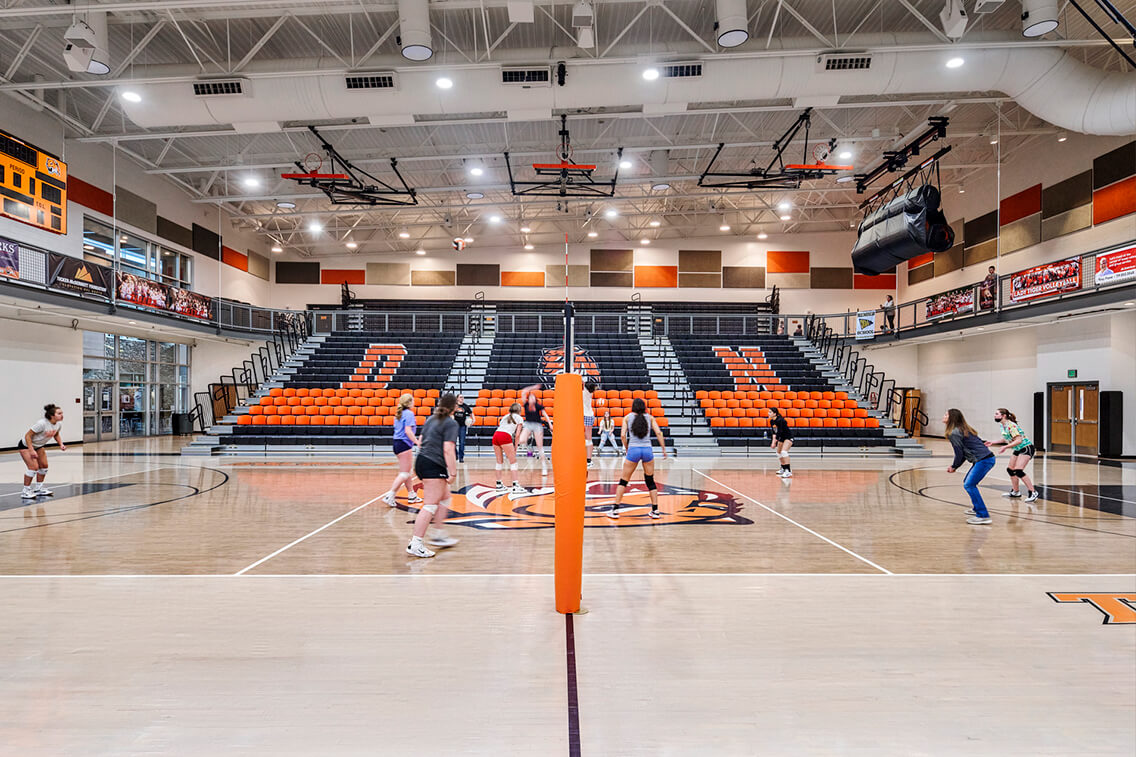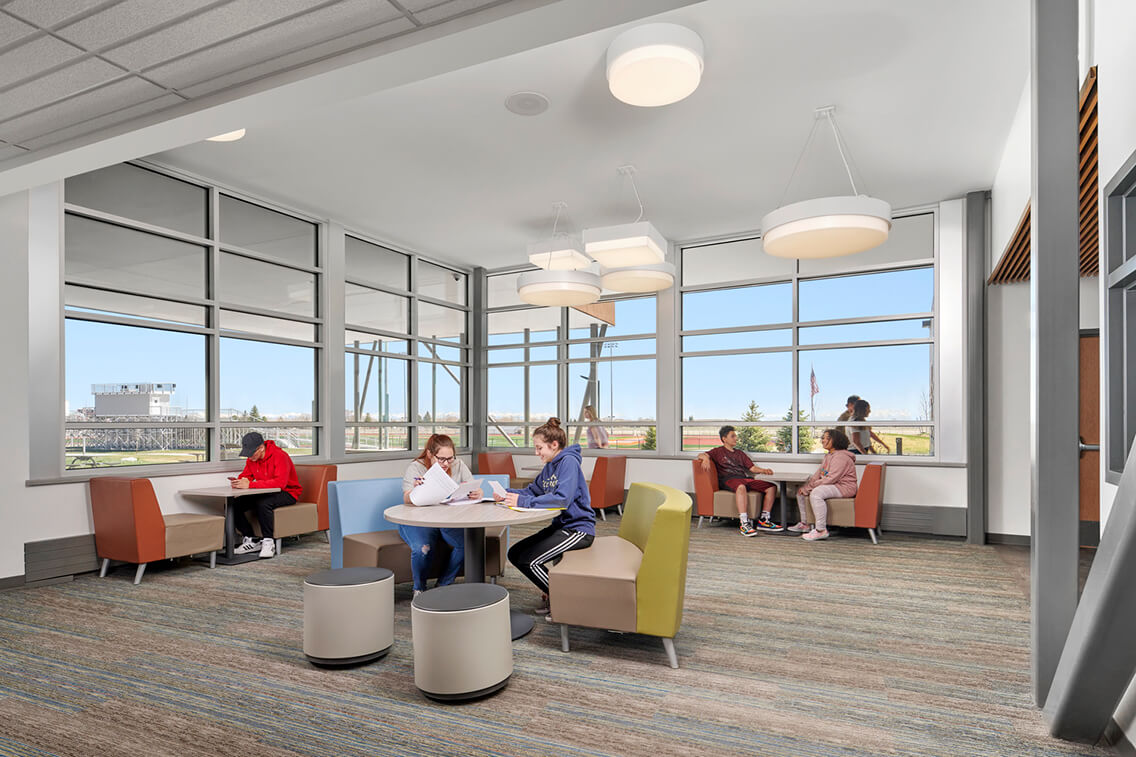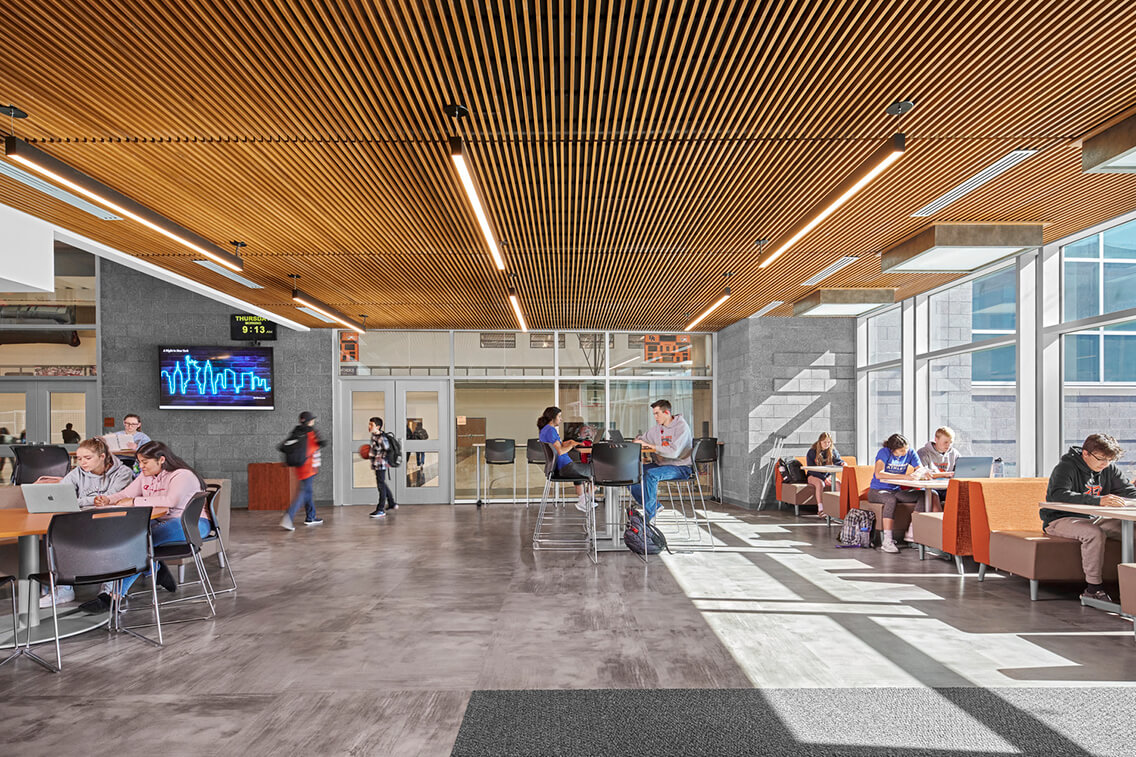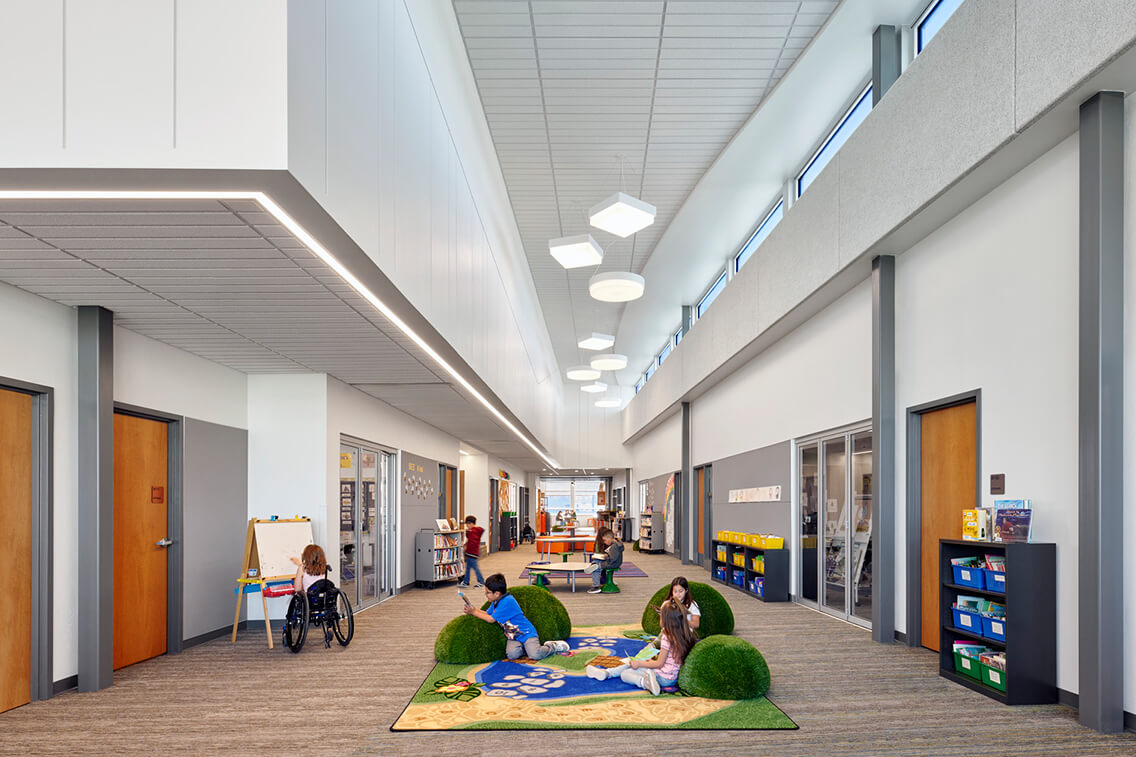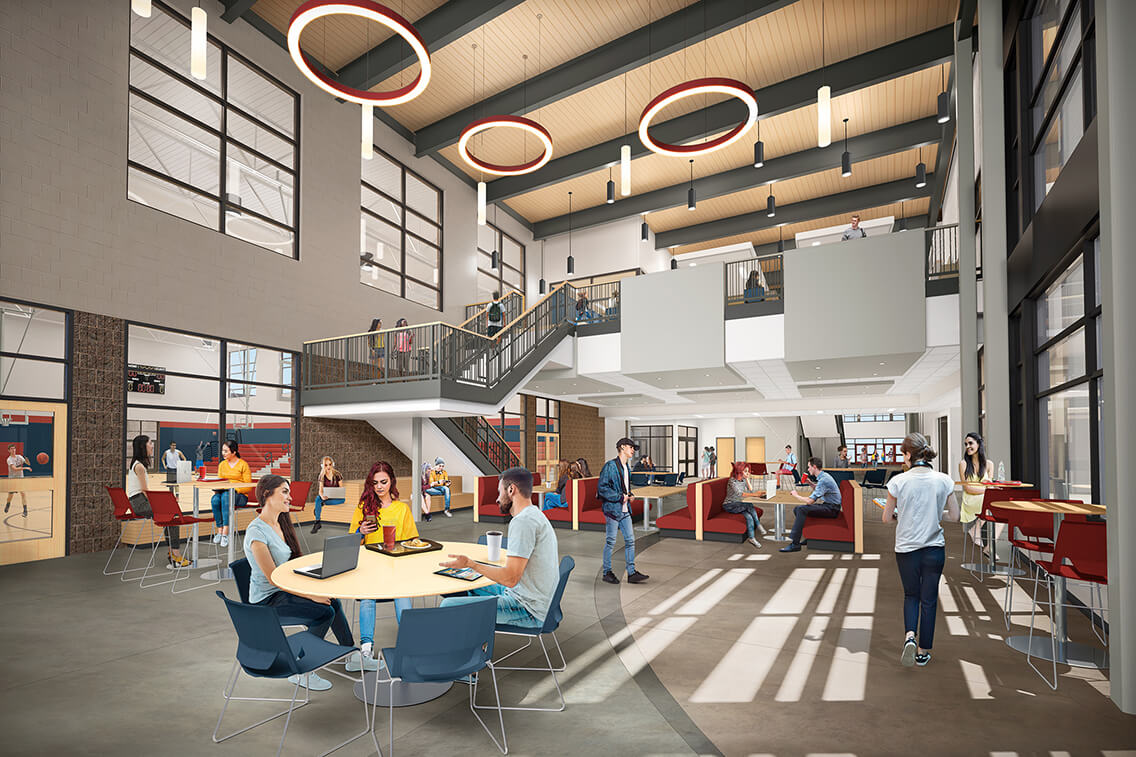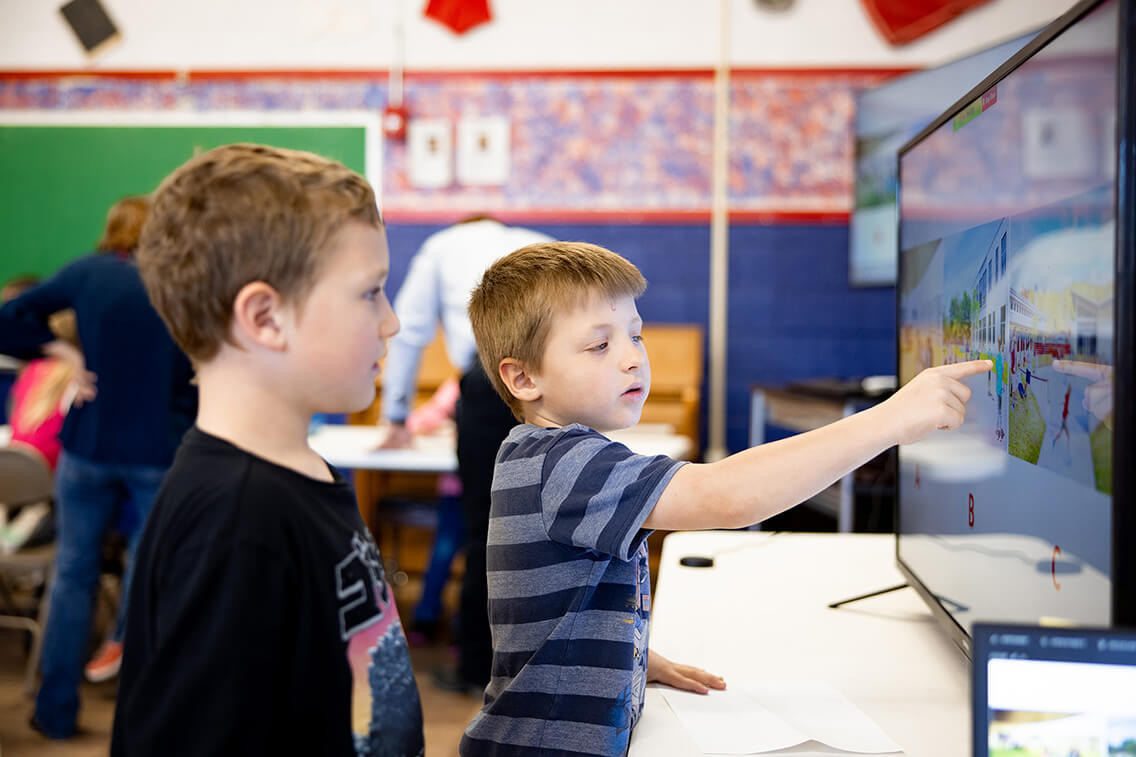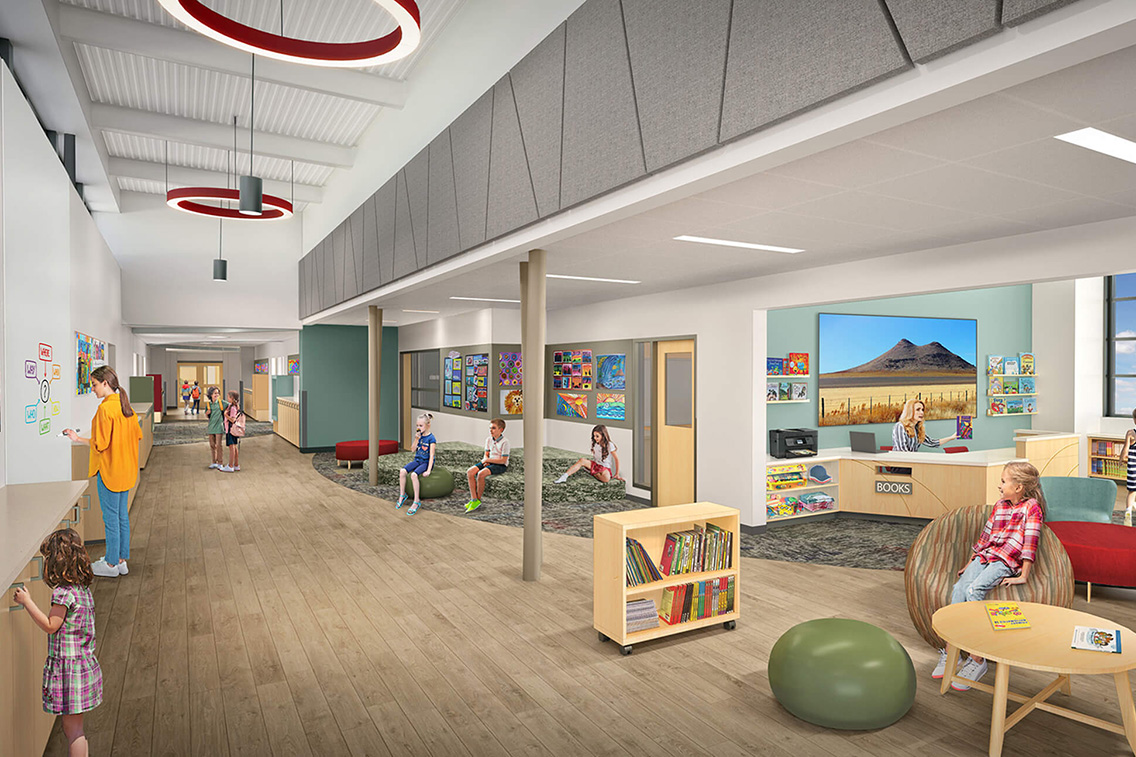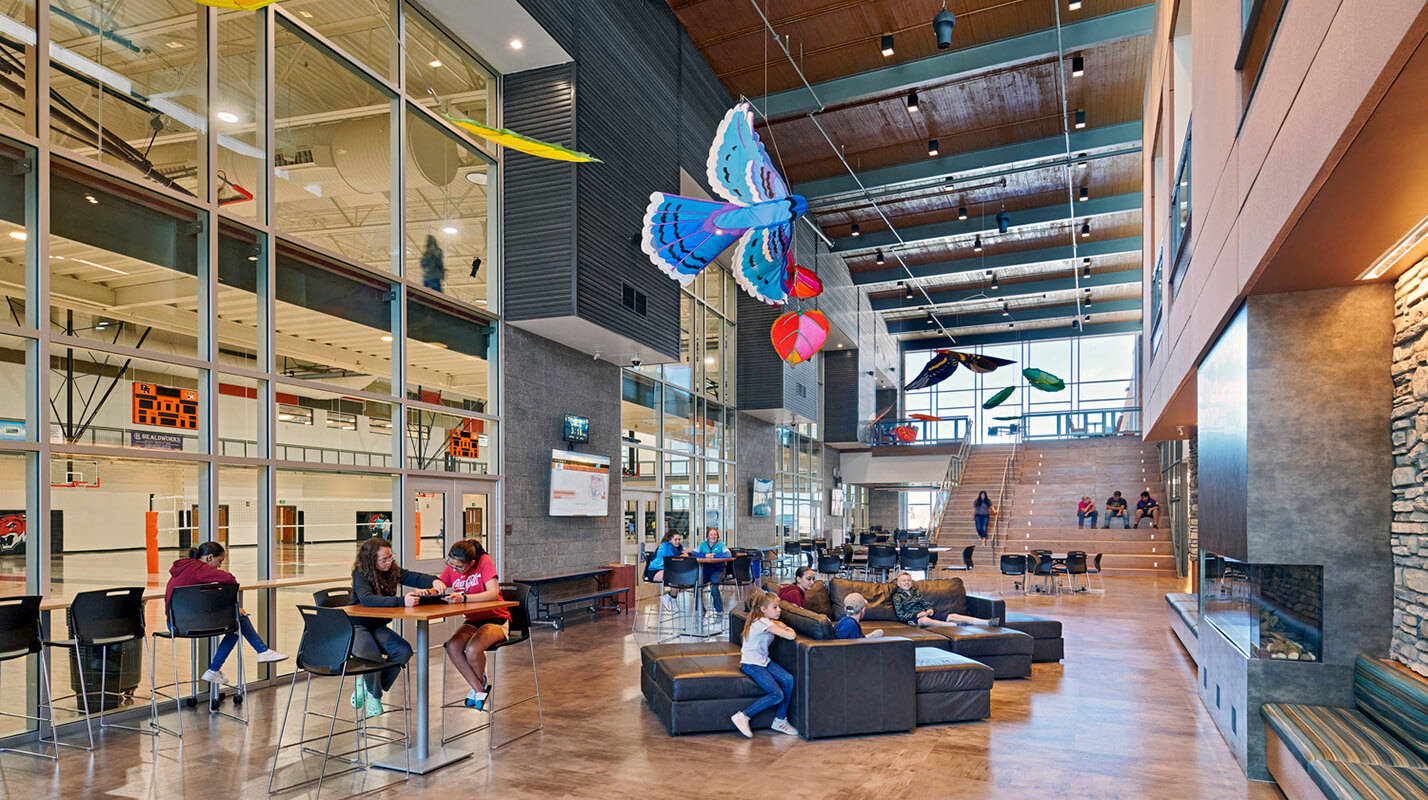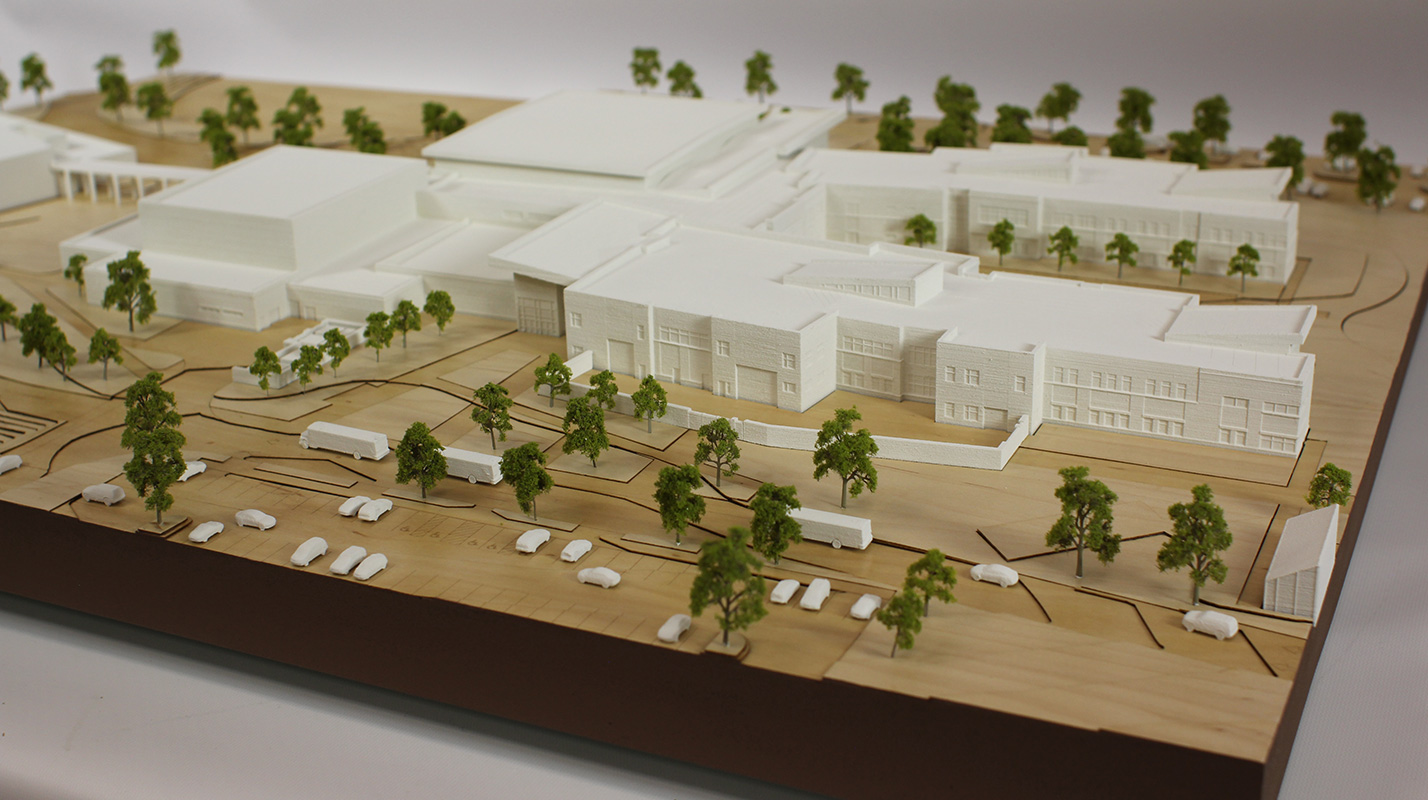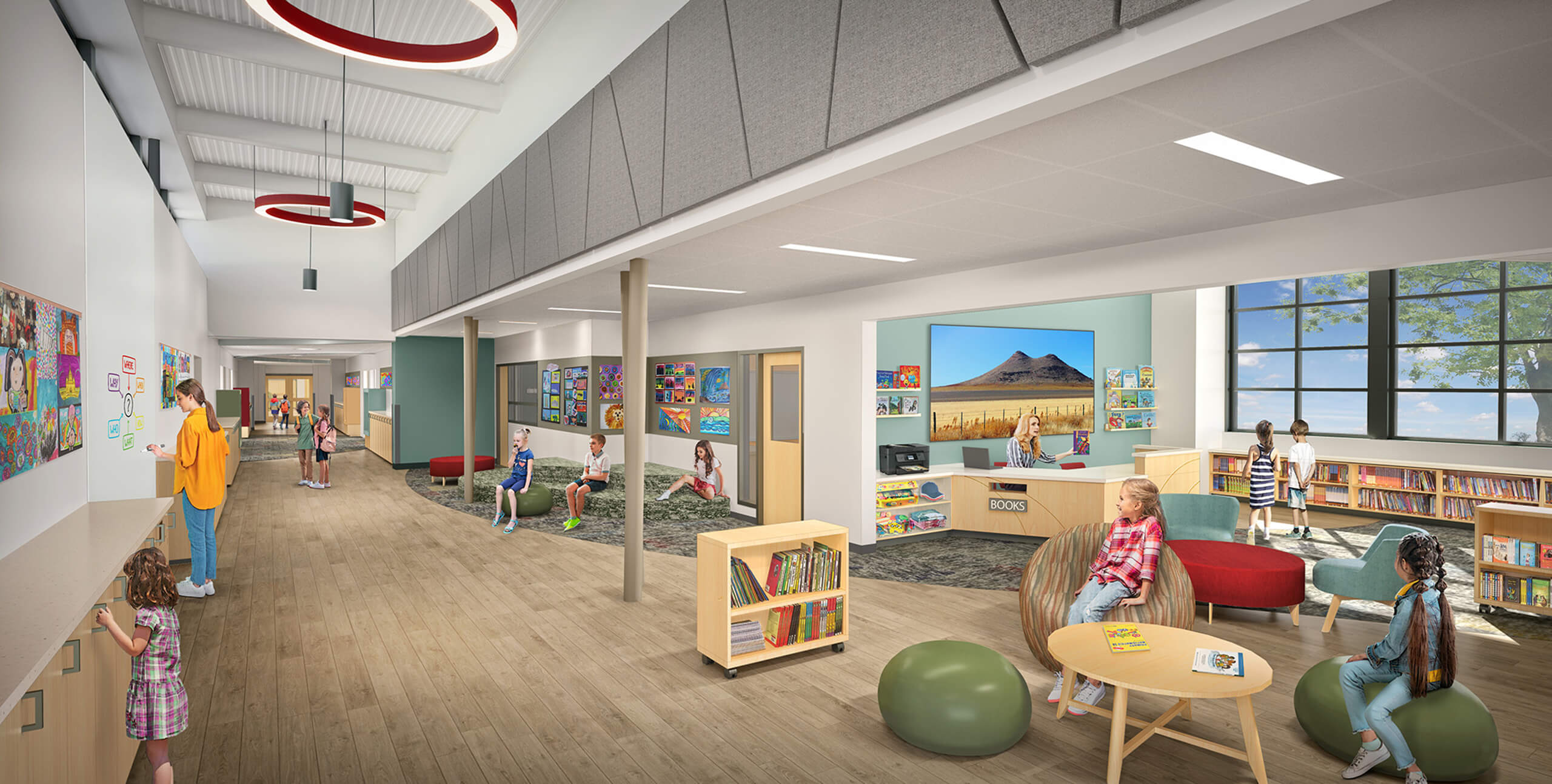How to achieve sustainable school design in rural and mountain districts
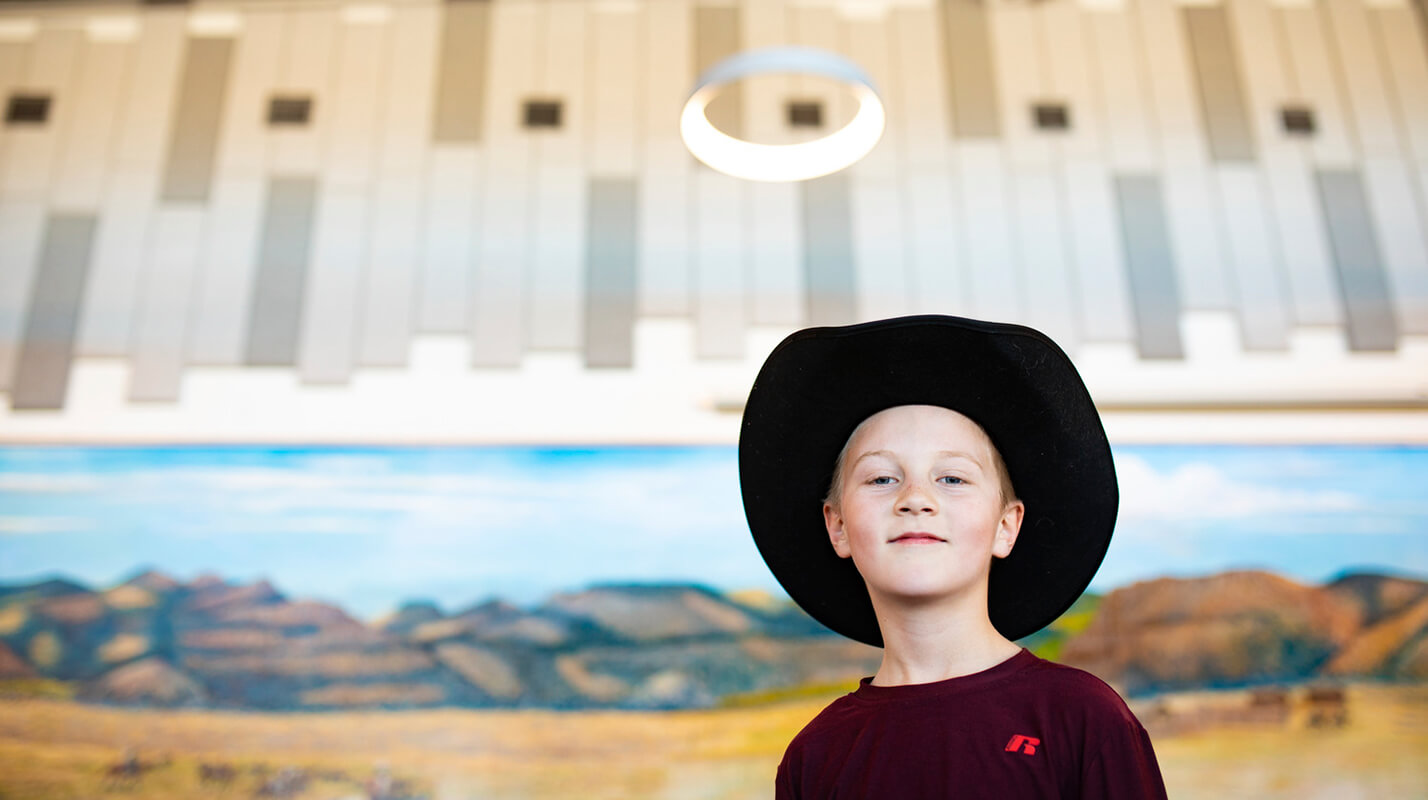
For taxpayers and students, sustainable schools just make sense
In the United States, public schools spend an average of $16,080 per pupil annually. These expenditures are mostly funded by state and local governments. In Colorado, 88% of public-school funding is sourced locally, making those communities the heaviest investors in their schools.
In the rural and mountain school districts of Colorado with smaller populations and less resources, efficiencies become paramount in the way schools function and serve students. These communities are increasingly looking for ways to lessen their impact on the environment, reduce operating costs, and increase occupant wellness in new construction and renovation projects.
Geography 101: use your environment to your advantage
Rural and mountain school districts face different sustainability challenges than their urban counterparts. While electric carports, bleeding-edge mechanical systems, and walkability points may make sense for an urban or suburban campus, these solutions don’t work in more isolated communities that face extreme weather conditions. School facilities in these areas require high-performance design that is serviceable and long-lasting.
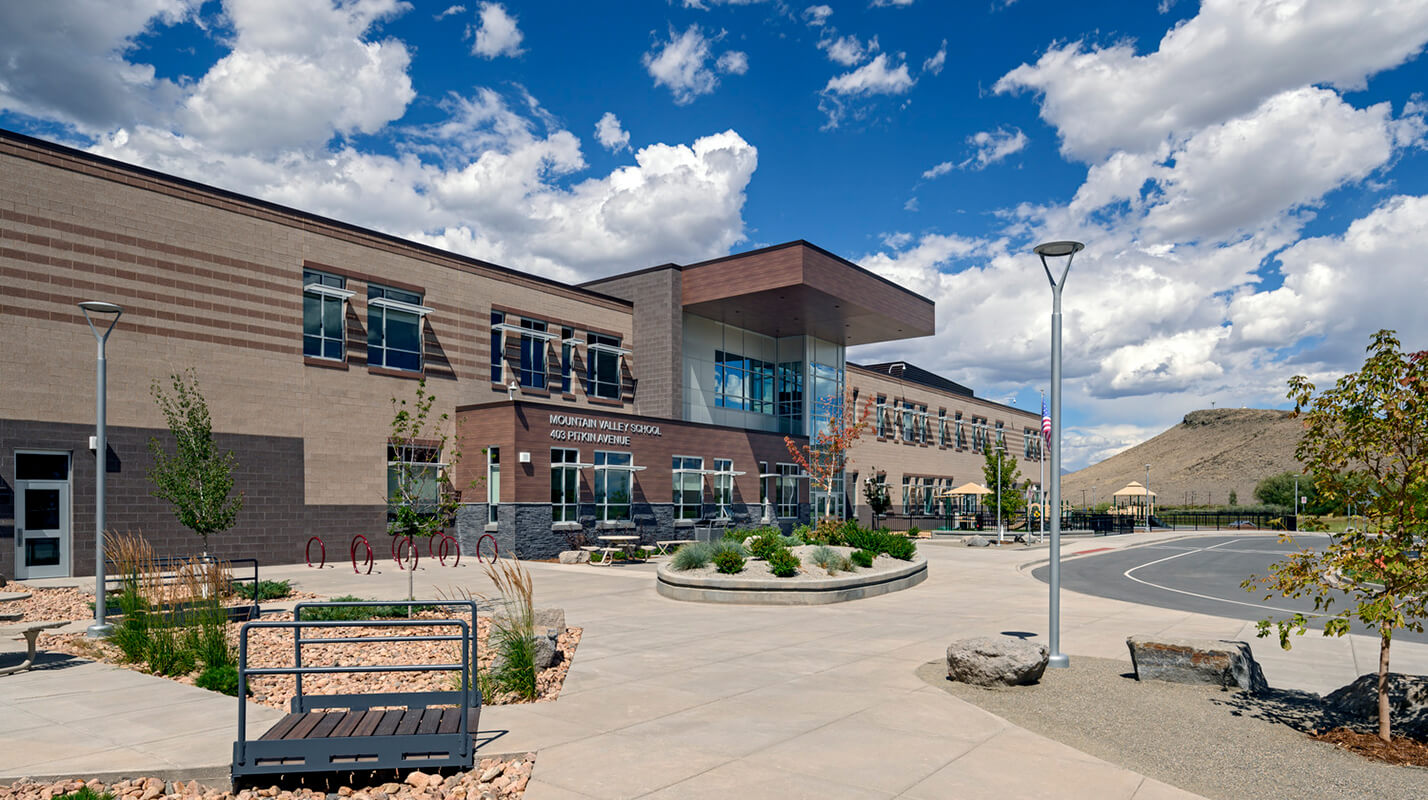
Mountain Valley School District’s New PK-12 School
In Saguache, Colorado, Mountain Valley School District’s new PK-12 School is a true testament to community collaboration that resulted in a LEED Certified school design “of the place.” The Saguache community is located in a remote part of the San Luis Valley with approximately 200 students. Access to service the facility was difficult at times with a restrictive site. Site accessibility, passive daylighting, water and energy conservation, and student safety were important considerations for the new school.
The new 71,900-square-foot school features a flexible media center, grade-based team centers for elementary, middle school, and high school students, a cafeteria and commons area, collaboration spaces, and a history corridor displaying Saguache and Mountain Valley memorabilia.
I look forward to the future of Mountain Valley School District and the positive impact this will have on our students, our community, and our future.
Travis Garoutte, Former Superintendent of Mountain Valley School District
Upper Rio Grande School District’s Del Norte K-12 Campus
Also in the San Luis Valley, the Upper Rio Grande School District consolidated their separate aging elementary, middle, and high school facilities into the Del Norte K-12 Campus to support both environmental and programmatical efficiencies. This community is located adjacent to Saguache with a student population of about 400.
The design of the new LEED Gold certified K-12 campus focuses on passive daylighting, an enhanced building envelope, and water-conserving landscaping to target energy efficiency. The design targets space efficiency by making learning and gathering spaces suitable for every type of student. This resulted in reduced utility bills for the district by 30%, as well as improved physical and mental wellbeing of all occupants.
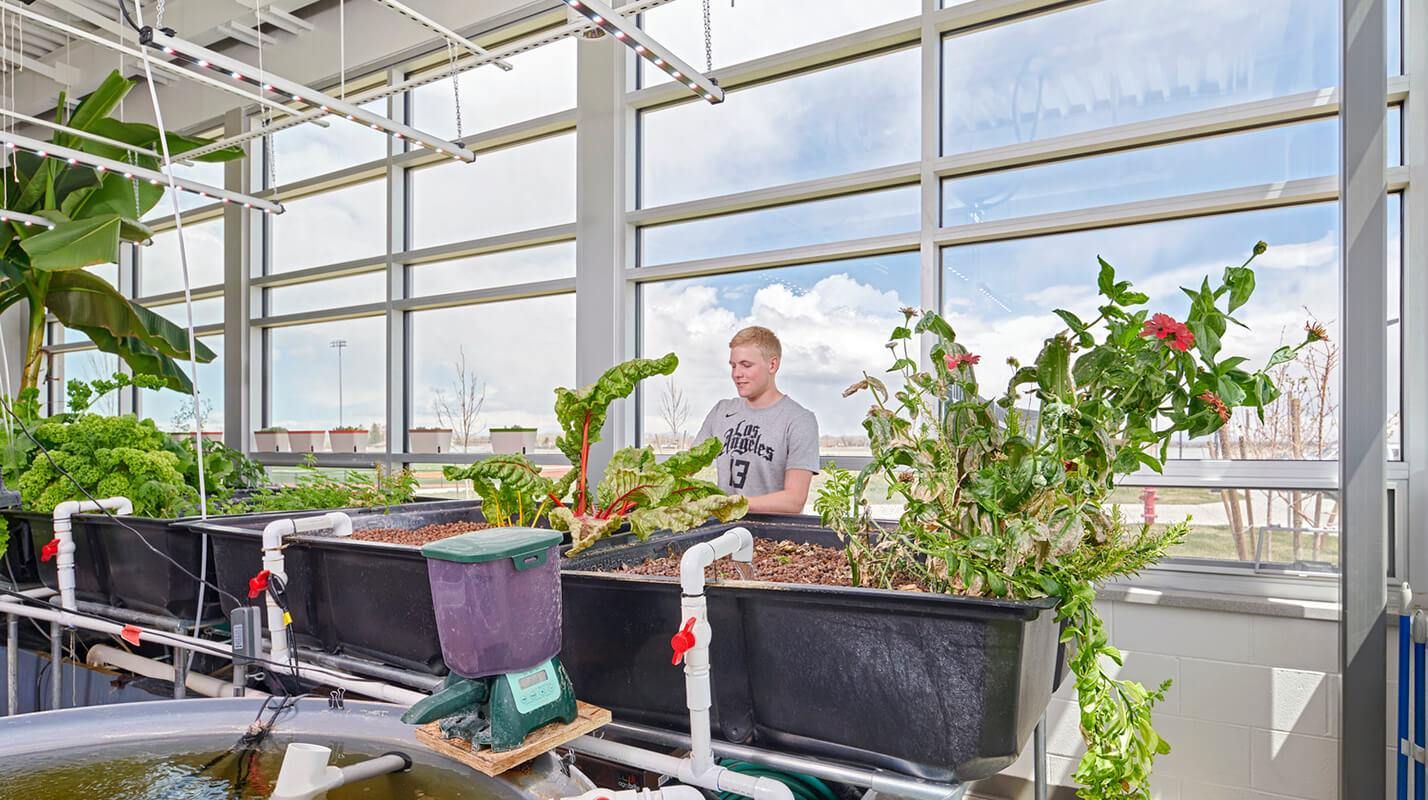
The campus features a 120,000-square-foot school, associated playfields, and a new synthetic turf football and track complex. The building includes separate wings and entrances for elementary, community events, and secondary education. Its core consists of a two-story commons space with views to the adjacent Sangre de Cristo Mountains. The commons provides immediate access to district offices, a media center/library, kitchen/server, theater/auditorium, and the gymnasium with a suspended track.
Make it more than a school by integrating community resources
From the beginning of the project, our team integrates the students, staff, and community into the design process. Together with the district, we form a design advisory group of 10-15 members who attend design meetings, solicit feedback from all stakeholders, and attend larger community meetings. The result—regardless of size and location challenges—is a successful and sustainable school that serves both students and the community.
Springfield School District’s PK-12 School
At Springfield School District’s PK-12 School, eight separate aging facilities are being consolidated into one 91,920-square-foot facility. The vision for the new school includes implementing their master plan goal to provide a cohesive, inspirational, and modern facility to last the community for the next 50 years.
The exterior design showcases a community courtyard for outdoor learning and community events, with separate parent, bus, and student traffic patterns providing site clarity and security.
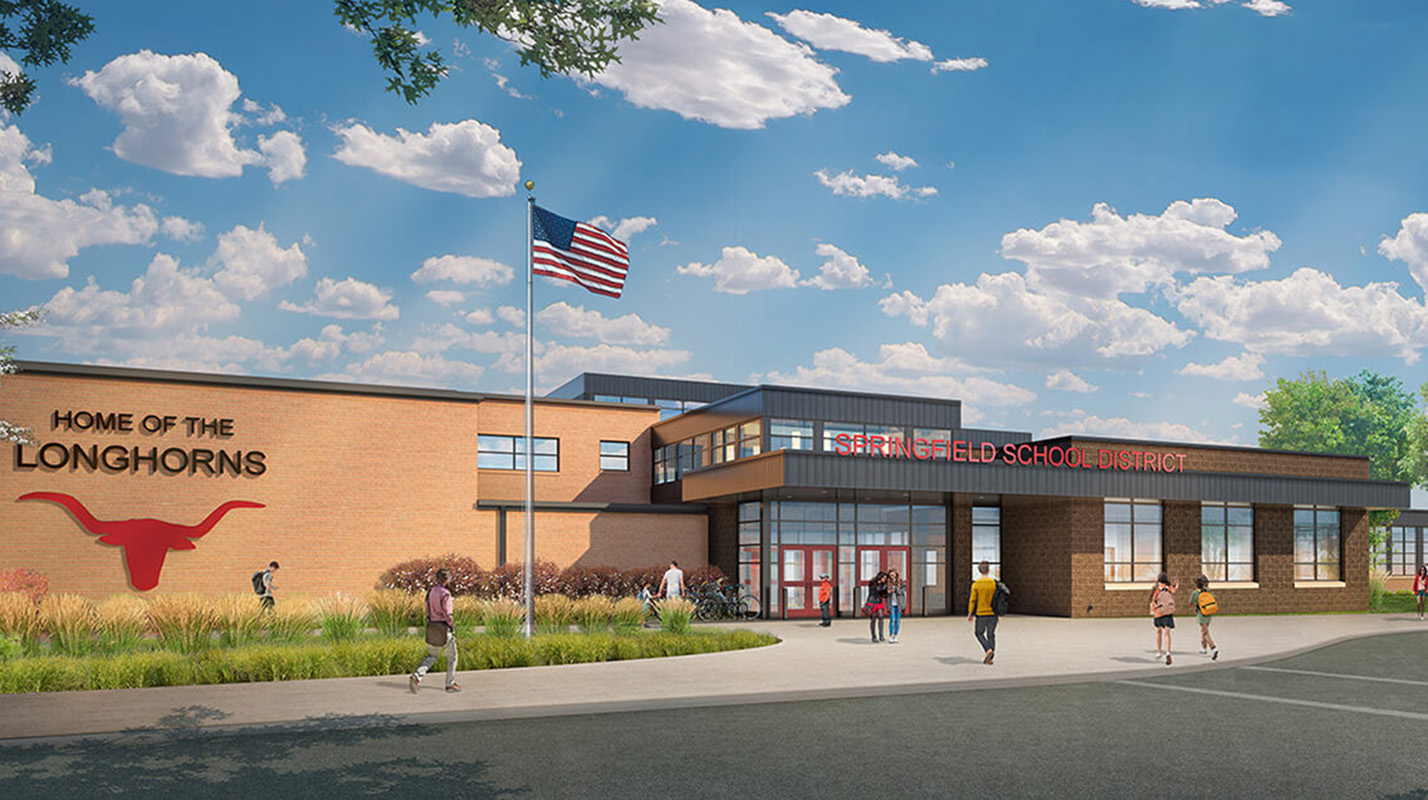
Interior and exterior materials complement space functionality and geographical context through a combined palette of earth tones, natural textures, and nature-inspired colors that honor Springfield and the greater eastern plains.
New program spaces include a modern vocational agriculture shop reflective of the local economy, a makerspace for elementary hands-on exploration, daylit and visually connected core learning spaces, and technology-rich media and information commons. Pathways through the schoolhouse include collaborative spaces, reading nooks, and prideful displays of student achievement and school heritage.
The project is on track to be CHPS verified through the careful orientation of learning spaces, enhanced building envelope and MEP systems, and thoughtful commitment to building and community stewardship.
Use the building as a teaching tool
Being resourceful means looking at the building as an exhibit in every way possible. Exhibiting local culture and pride encourages student and community ownership of the building, while exhibiting tactile and visual learning opportunities turns the school into a teaching tool.
Weld RE-5J’s Roosevelt High School
At Weld RE-5J’s Roosevelt High School, hands-on education is rooted in every square foot. As a Career Technical Education (CTE) school, it provides students with the academic and technical skills, knowledge, and training necessary to success in future careers. By making the academic context hands-on, courses introduce them to workplace competencies.
These programs are increasingly engaged in community and business partnerships, connecting students with training for in-demand jobs right where they live. It strengthens the local labor market, builds the economy, and helps the community retain talent and maintain a steady population.
Our goal is to find ways for real learning and put technical skills on display, so what students create and see are tangible.
Rebecca Albert Vollrath, District CTE Coordinator and Assistant Principal at Roosevelt High School
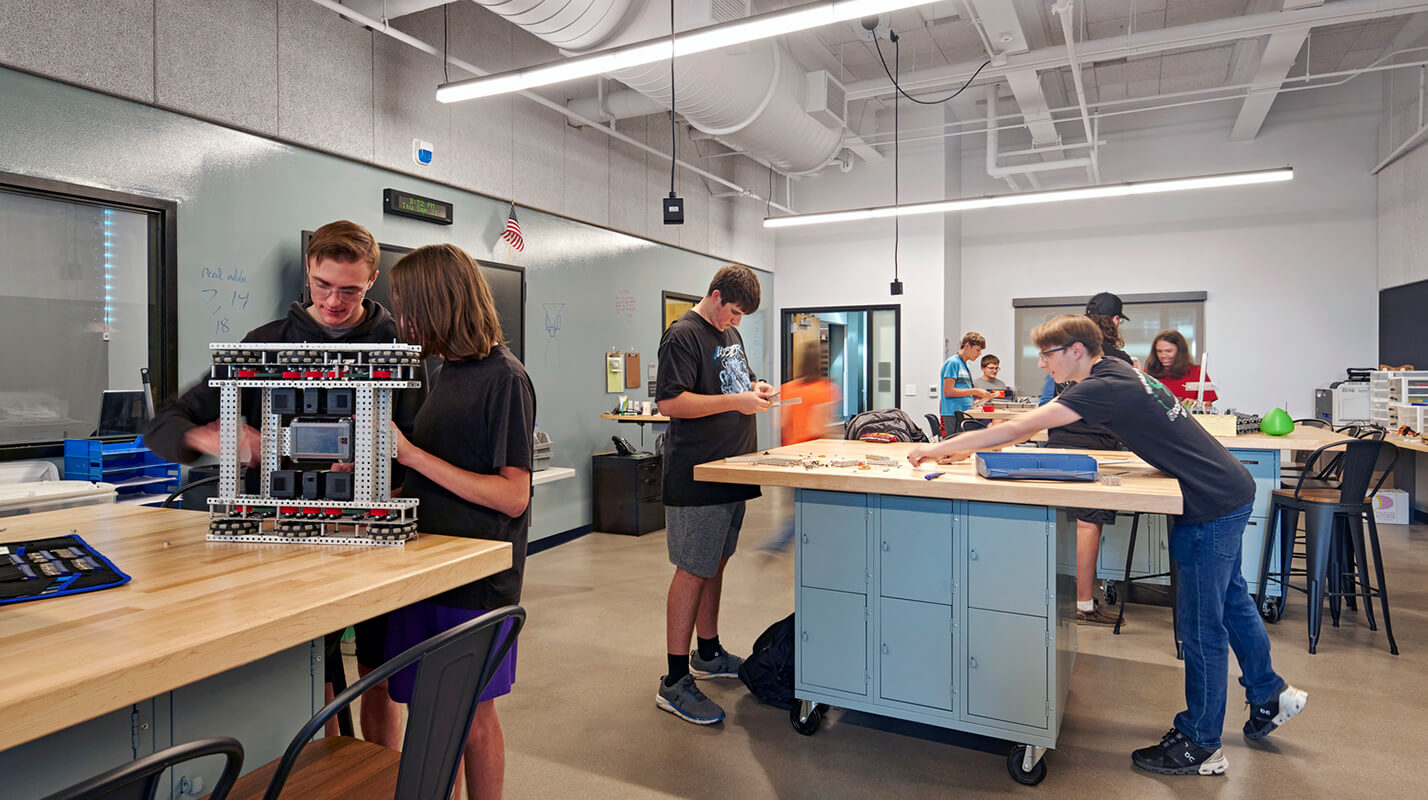
Support wellness, safety, and equity for all within the school
Sustainable schools do more than improve heating, water, and lighting efficiencies. They enhance mental well-being, safety, and equity while adhering to budget and functional requirements. With multi-generational student populations common in rural school districts, honoring the history of the school helps foster community representation and involvement in the school’s success.
Plateau Valley School District’s PK-12 School Master Plan
A group of compassionate elementary school students met with our team when master planning the new PK-12 school for the Plateau Valley School District. One of their classmates requires a wheelchair and faces challenges accessing the playground and many other areas of the current school facility, including its main entrance. Students were adamant that their new school accommodates their classmate and friend: “We need it so that our classmate can come onto the playground and we don’t have to carry her there.”
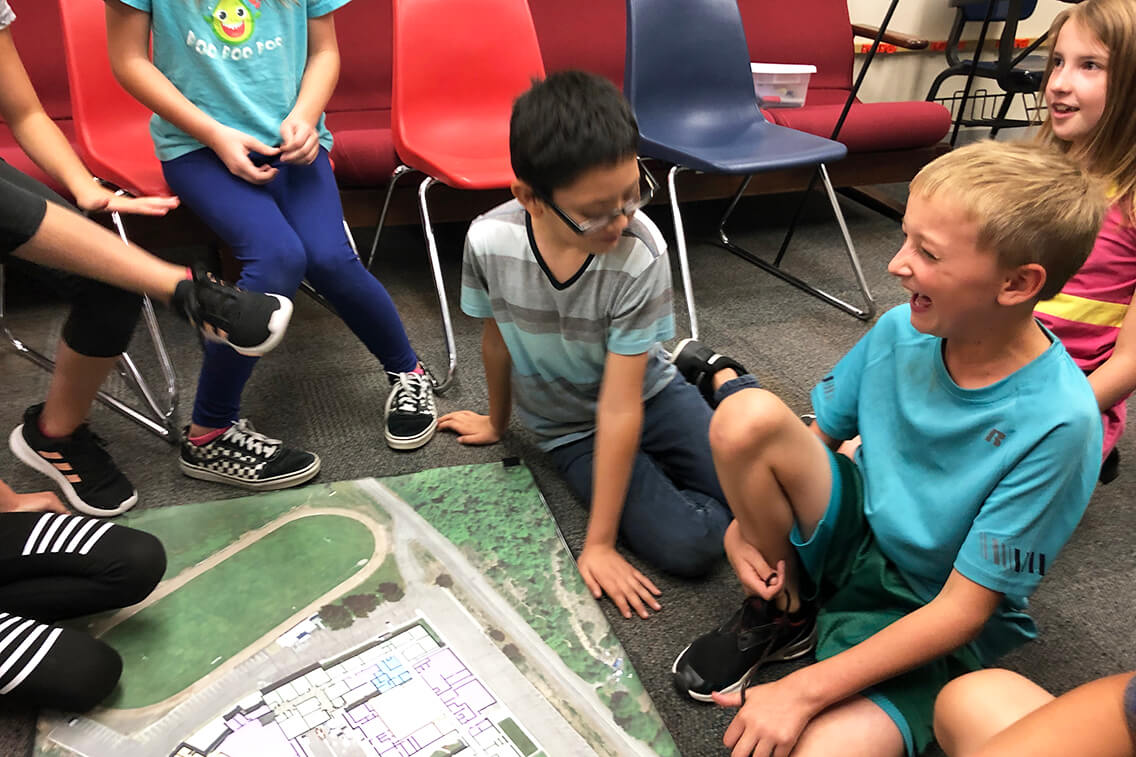
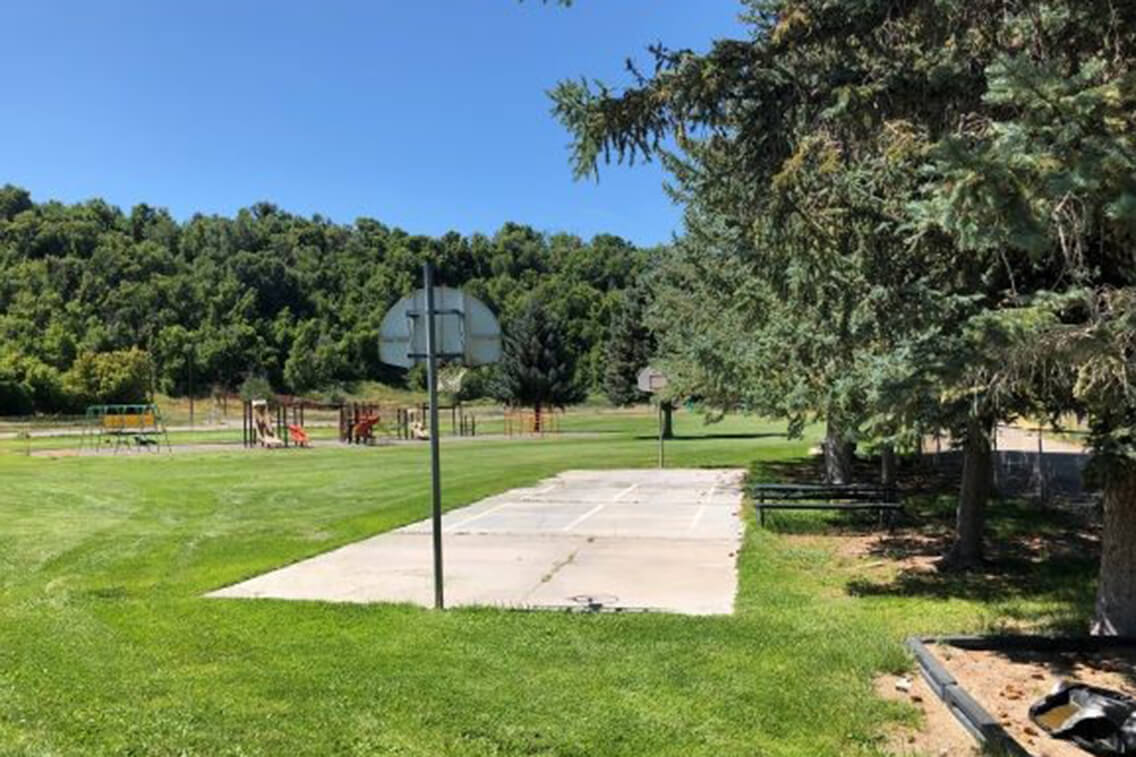
Equitable access to education and educational facilities is a foundational value that drives sustainable school design. Our Education team has taken the compassionate spirit of these students to heart as we design the school, going beyond code minimums to design for accessibility at every age and within every educational program. No student, staff, or community member should ever feel left out or left behind.
Make sure your architect thinks beyond statistics
When schools perform well, our children thrive, and our futures are all better for it. Our Education studio has worked with more than 70 school districts across Colorado. As part of those communities, we know the landscape, the people, and the challenges Colorado schools face. We approach design with sustainability as an inherent requirement to overcome those challenges, rather than an additional service.
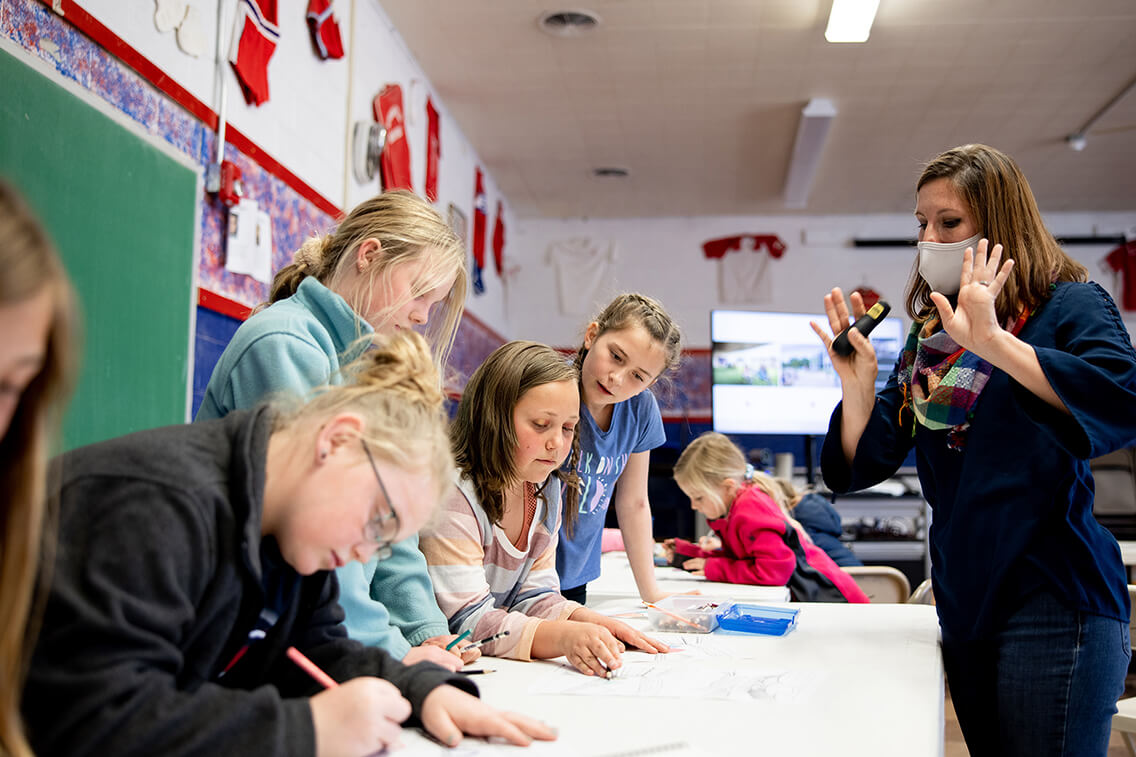
Our team has experience implementing both LEED and CO-CHPS rating systems within remote school district projects. Projects that have achieved or are tracking certification or verification include:
- Lake County High School – LEED Gold
- Buena Vista Middle/High School – LEED Silver
- Glenwood Springs Elementary School – LEED Gold
- Mountain Valley PK-12 School – LEED Certified
- Del Norte K-12 School – LEED Silver
- La Veta PK-12 School – on track to be CHPS Verified
- Springfield PK-12 School – Pursuing CHPS
We love working with districts to design the schools of their dreams. Learn more about our Education design studio and how they can help you do more with your school facilities.
Authors
Stay on the leading edge
Stay up to date on emerging trends, research, hot topics, and more delivered conveniently to your inbox.
"*" indicates required fields
